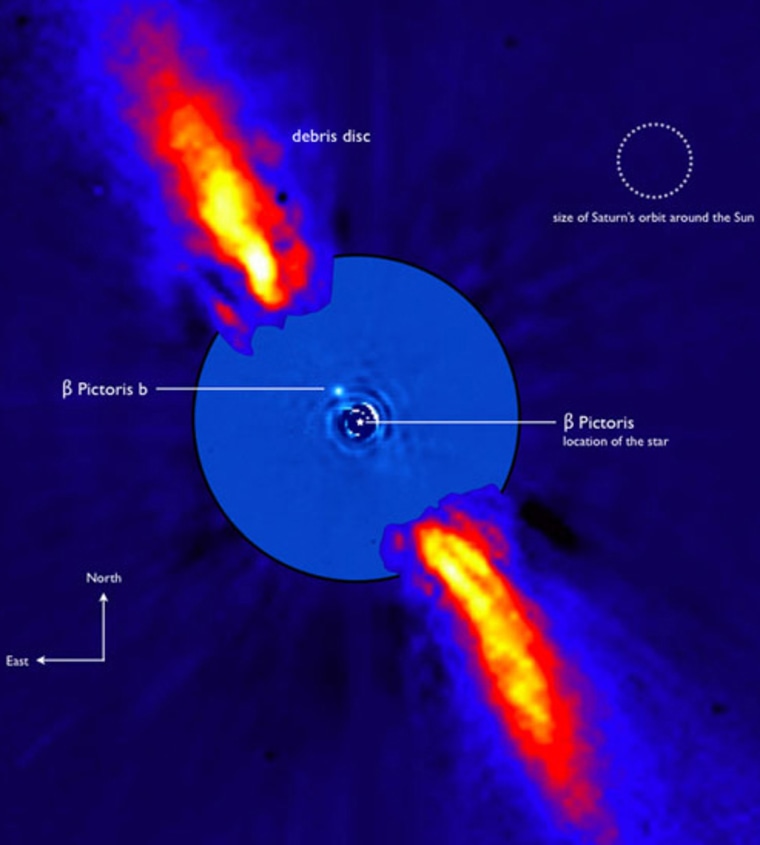Astronomers say they have directly imaged a giant exoplanet orbiting its parent star. The announcement comes on the heels of two other reports this month of direct images of planets beyond our solar system.
The new infrared image shows the object as a speck of light near the star Beta Pictoris, which is 70 light-years from Earth, toward the constellation Pictor.
"We cannot yet rule out definitively, however, that the candidate companion could be a foreground or background object," said study team member Gael Chauvin of Grenoble Observatory in France. "To eliminate this very small possibility, we will need to make new observations that confirm the nature of the discovery."
Chauvin and other French astronomers discovered the candidate planet using the European Southern Observatory's Very Large Telescope. The possible planet is estimated to weigh about eight times the mass of Jupiter with an orbit of eight astronomical units from its star, where one AU is the average Earth-sun distance.
(That distance is comparable to Saturn's orbit, which circles the sun at an average distance of 9.6 AU. In contrast, the four planets reported earlier this month lie much farther out from their parent stars, at distances ranging from 24 to 119 AU.)
Astrophysicist Sara Seager of MIT, who was not involved in the latest discovery, said while the possibility is exciting, another more convincing image of the object is in order. "We want to make sure it's moving together with the star," Seager said.
Another image would show whether the star is moving at a different speed relative to this object and other background objects or if the star and planet are moving together (which would help to confirm this is indeed a planet).
Astronomers had thought a planet could be responsible for irregularities seen in the debris disk, first imaged in 1994, surrounding Beta Pictoris. As a planet treks around its star, the planet jostles and tugs on pieces of dust and debris, shaping the disk.
"Beta Pic has been teasing astronomers for the past two decades with hints of an orbiting planet," said Paul Kalas, an astronomer at the University of California at Berkeley who was not directly involved with the study. Kalas led a team of astronomers who reported this month the first visible-light snapshot of a single-planet system around the star Fomalhaut.
Slideshow 12 photos
Month in Space: January 2014
The researchers say the object does explain the warped disk. "The candidate companion has exactly the mass and distance from its host star needed to explain all the disk's properties," said team leader Anne-Marie Lagrange of the Grenoble Observatory.
The team tried to rule out other nonplanet possibilities. For instance, they looked at images taken by the Hubble Space Telescope of the system, which would likely reveal background and foreground objects.
They also used three independent detection methods to rule out the possibility that the point source of light was just an artifact of the observing instrument.
"Overall, this is an exciting discovery that could be verified in just a few weeks time since Beta Pictoris is a bright star visible during the winter months," Kalas told Space.com.
Actually, Lagrange said the planet might not be visible with their instruments currently, because of the inclination of the orbit and how it is aligned. So from our perspective on Earth, the planet could travel too close to its star to be visible.
The discovery will be detailed in a forthcoming letter to the editor in the journal Astronomy and Astrophysics.

